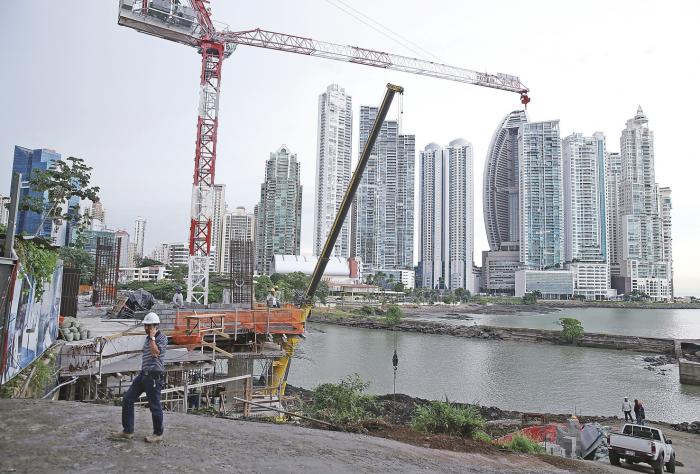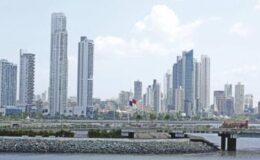Panama trying to recover construction to pre-COVID levels.
- By : James Bryson
- Category : Economy, Infrastructure

Historically, the construction sector is one of the main engines of economic growth in Panama. But during the covid-19 pandemic it was one of the most affected, falling by up to 50% (2020), and to date it has not achieved the growth levels it had before (pre-pandemic).
The construction sector will close this year with a growth of between 10% and 12%, but below pre-pandemic levels, according to the latest estimates from the Panamanian Chamber of Construction (Capac) presented this Thursday at the conference entitled ” Evaluation and perspectives of the construction sector”.
“Before the pandemic, the construction sector weighed 15%, but in the post-pandemic the percentage dropped to 10%. Today we are in recovery, managing it very conservatively. There is a reflection of growth and we are optimistic that this could reach pre-pandemic levels in 2023”, said the president of Capac, Carlos Allen.
However, the economic recovery of the construction industry is the result of the execution of public projects such as the extension of Metro line 2, advances in line 3 and the construction, widening and maintenance of road works in the country.
The contribution of the sector
In 2022, the cost of construction shows “positive” values, with a growth of more than 20%, mainly led by non-residential projects. By sector, the one that grew the most is non-residential, around 65%, while in residential “growth is less,” according to economist Luis C. Morán.
Through September 2022, the cost of construction, additions, and repairs totaled $654 million. While for the years prior to the pandemic, that is, 2019, it was $884.4 million and $993.3 million in 2018. Between January and September 2022, the cost of construction, additions, and repairs grew 21.6%, which which reflects an improvement with respect to the accumulated figure of the previous year.
In the percentage composition of the gross domestic product (GDP) of the construction sector, it is observed that the contribution went from 8.7% in 2020 to 10% in 2021, but still below the levels of 2019, that is, prior to to the pandemic.
“The contribution and GDP of the construction sector are still below pre-pandemic levels. The growth of the construction sector is projected between 10% and 12%, but this will depend on the conditions of the continuity of the development of the works and also on some elements such as digitization and streamlining of procedures, and other factors that are key for the development of infrastructures”, asserted Morán.
Despite everything, Allen added, expectations point to Panama continuing and continuing to be a sector with potential and capacity to continue growing in economic terms and support the generation of quality jobs. But to achieve greater dynamics, “higher levels of investment, both public and private, are required.”
Thus, it is observed that the construction sector could be recovering its levels at the end of 2022 or the beginning of 2023. “In 2023, what is observed is a kind of economic landing,” said Morán.
But for the conditions of a sustainable growth of the industry to be met, Allen, like Morán, believes that there are factors that must be developed, such as: the digitization of procedures and the development of new projects.
Although it is also important, he added, that government entities expedite pending payments for progress of works to state contractors and suppliers, as well as promote the activation of turnkey projects and Public-Private Partnerships (PPP).
“The behavior of the industry is cyclical. To make its recovery sustainable, we must implement actions and resume others to encourage private investment which, together with greater investment in public infrastructure, as other countries are doing, is key to generating more labor,” Allen said.
accounts receivable
One of the difficulties that the private construction sector has been facing is the payment of outstanding accounts by the government. And to date, according to Allen, the government owes suppliers and contractors “more than $300 million.” Last March or April, they met with President Laurentino Cortizo and the Minister of Economy and Finance, Héctor Alexander, and an extraordinary loan of over $300 million was arranged, and it is not until this month of November that You are finalizing the payment to suppliers and contractors.
“This gap hits the sector and we consider that there are accumulated accounts from that moment that was discussed to date. Obviously, the amount that was temporarily obtained is again accumulated in recent accounts. So we hope that the flow of the government will improve and these bills will be paid as soon as possible”, whose figure is more than “$300 million”, he pointed out.



No Comments